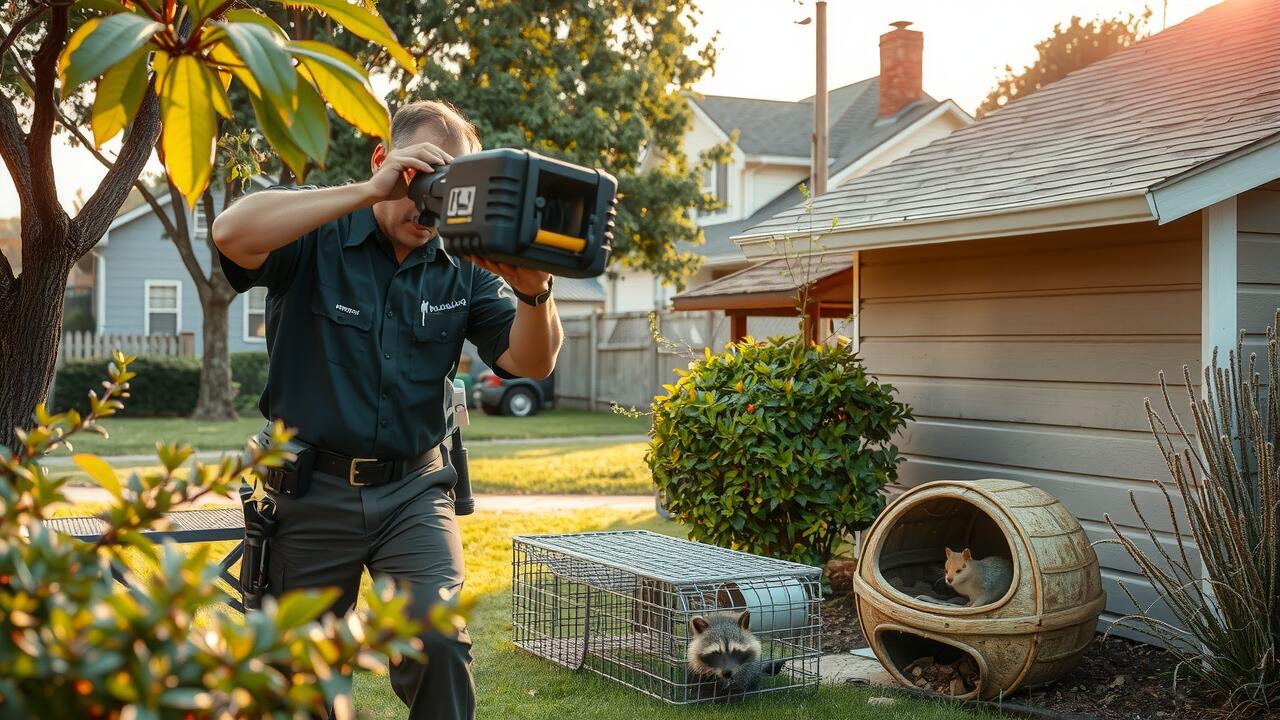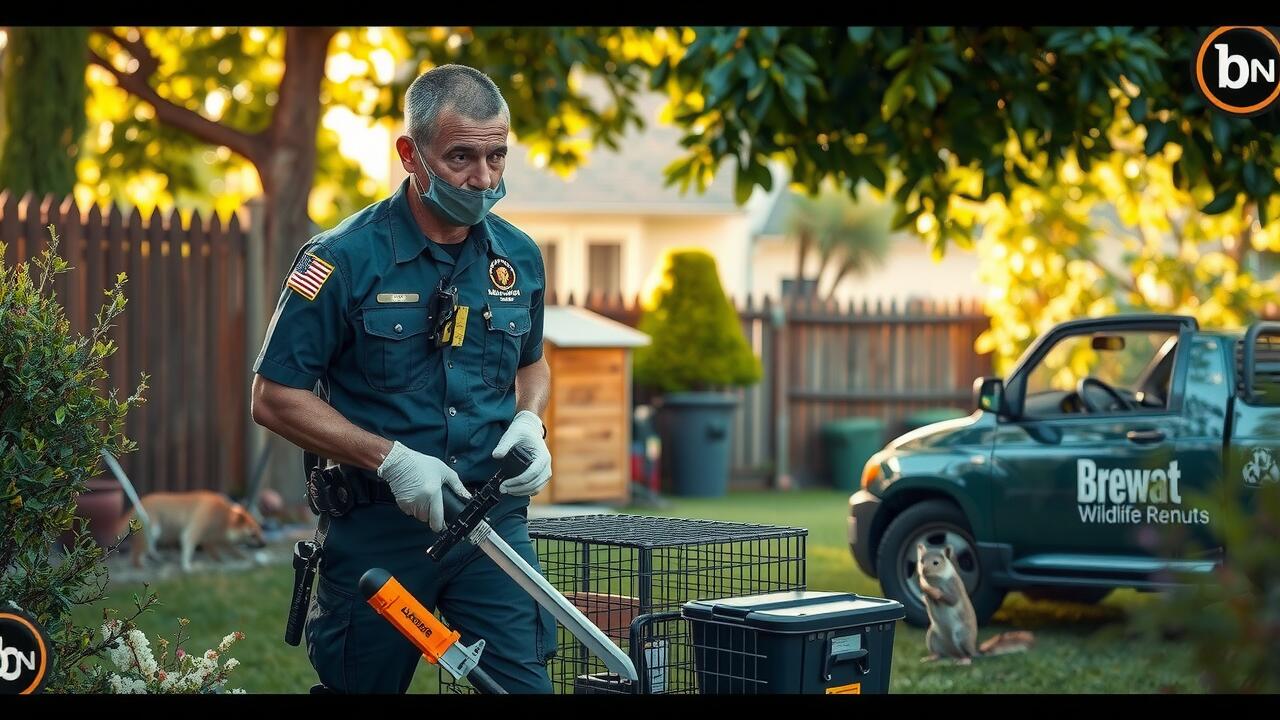
Maintenance Costs After Exclusion
Post-exclusion maintenance is essential to ensure that wildlife does not return to the property. Routine inspections help identify any weak points in the exclusion barriers. Repairing those areas promptly can prevent costly problems in the future. Homeowners may take on some maintenance tasks themselves, but hiring a professional can provide peace of mind and thoroughness.
For those considering services like Commercial Wildlife Removal in Houston, Texas, understanding ongoing expenses is crucial. Regular maintenance might include reinforcing exclusion measures and monitoring for new wildlife activity. Setting aside a budget for these services ensures that the property remains protected over time, making the initial investment in exclusion worthwhile.
Long-term Financial Considerations
When considering the long-term financial implications of wildlife exclusion, it is essential to weigh both the immediate expenses and the potential risks associated with wildlife infestations. Investing in effective exclusion methods can save property owners considerable money over time by minimizing damage to structures, landscapes, and even electrical systems. The upfront costs of services, like those offered through Commercial Wildlife Removal in Houston, Texas, can seem substantial, but these expenses often pale in comparison to the repair costs incurred from wildlife-related damage if left unchecked.
Moreover, property owners should factor in the ongoing costs tied to maintenance, inspections, and potential follow-up treatments. Each property is unique, and wildlife control professionals can provide tailored services that enhance effectiveness and ensure longevity. As awareness grows about the importance of prevention, many find that scheduling regular inspections contributes significantly to long-term savings and peace of mind, further underscoring the value of initial investments made in wildlife exclusion measures.
Impact of Property Size on Costs
The size of a property plays a significant role in determining the costs associated with wildlife exclusion. Larger areas generally require more extensive assessments and materials to secure the premises against potential animal intrusions. Factors like perimeter length and the number of vulnerable entry points can necessitate additional labor and resources, ultimately affecting the total price of exclusion services. Small properties often incur lower costs due to simpler layouts but may still require tailored approaches depending on specific vulnerabilities.
For instance, a sprawling commercial facility may require comprehensive planning and execution to effectively manage wildlife challenges. This may involve multiple inspections, strategic barrier installations, and ongoing monitoring. In contrast, a residential space might lead to a more straightforward process. When considering options like Commercial Wildlife Removal in Houston, Texas, evaluating property size ensures accurate estimates and effective strategies tailored to individual situations.
Small vs. Large Properties
The costs associated with wildlife exclusion can vary significantly between small and large properties. Smaller properties typically require fewer resources for exclusion efforts, as there are fewer entry points to secure and less area to inspect and maintain. This can result in lower initial costs and simpler ongoing maintenance demands. Property owners should still be vigilant. Even small spaces can host unexpected wildlife issues.
In contrast, large properties often present more complex challenges. The expansive area creates a greater number of potential entry points for animals, necessitating comprehensive inspections and more robust exclusion methods. This complexity can drive costs upwards. For those seeking assistance, services like Commercial Wildlife Removal in Houston, Texas, can provide tailored solutions to fit the specific size and needs of the property. Understanding these distinctions helps property owners make informed decisions and budget accordingly.
Additional Services That Affect Pricing
The cost of wildlife exclusion can fluctuate significantly based on the additional services provided. Homeowners and property managers may require inspections to assess the extent of wildlife presence and potential vulnerabilities in structures. These inspections often uncover underlying issues that need addressing, which can lead to added expenses. Technicians may suggest repairs or enhancements to further secure the property against wildlife, increasing the overall cost of the exclusion process.
For businesses considering services like Commercial Wildlife Removal in Houston, Texas, the financial implications are similarly affected by the scope of services requested beyond the initial exclusion. Routine monitoring and ongoing maintenance might be advised to ensure that the property remains wildlife-free. Each of these additional services can contribute to the total investment, making it essential for property owners to factor them into their budget when planning for long-term wildlife management.
Inspections and Repairs
Regular inspections are essential for maintaining effective wildlife exclusion and preventing infestations in the first place. They allow property owners to identify potential vulnerabilities and address them before they escalate into costly problems. A thorough assessment can uncover weak points in the exclusion barriers and highlight areas that may require additional reinforcement or repair. Incorporating these inspections into a routine maintenance schedule can save significant expenses in the long run.
When it comes to repairs, timely intervention can make all the difference. Damages caused by wildlife can lead to structural issues or health hazards if not addressed promptly. Moreover, if repairs are neglected, they often turn into larger, more expensive projects. Business owners seeking effective solutions often turn to specialists in Commercial Wildlife Removal in Houston, Texas, who can provide both the removal services and the follow-up inspections necessary to maintain a safe and secure environment.
FAQS
What is wildlife exclusion?
Wildlife exclusion refers to the process of preventing animals from entering and inhabiting a property through physical barriers, such as fences or sealants, as well as other preventive measures.
How much does wildlife exclusion typically cost?
The cost of wildlife exclusion can vary widely depending on factors such as the size of the property, the extent of the wildlife problem, and the methods used for exclusion. On average, costs can range from a few hundred to several thousand dollars.
Are there ongoing maintenance costs associated with wildlife exclusion?
Yes, there are often maintenance costs associated with wildlife exclusion. Regular inspections, repairs of barriers, and potential additional treatments can incur costs over time, which should be factored into your budget.
Does the size of my property affect the cost of wildlife exclusion?
Yes, the size of your property can significantly impact the cost of wildlife exclusion. Larger properties may require more extensive measures and materials, leading to higher overall costs compared to smaller properties.
What additional services may increase the cost of wildlife exclusion?
Additional services that may affect the pricing of wildlife exclusion include inspections, repairs of existing structures, and any necessary wildlife removal services. Each of these services can add to the overall expense.
